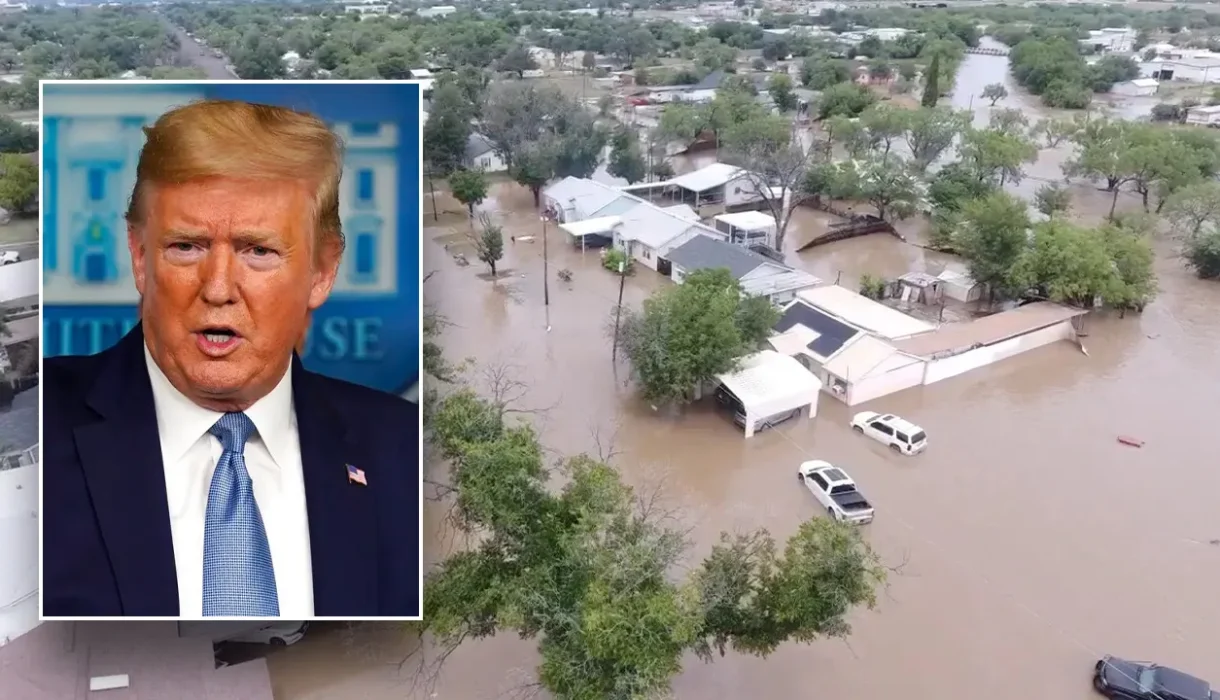
After the Texas Floods: Are Prayers Enough? Unpacking the Realities Behind Political Responses.
Posted in :
While prayers offer comfort, Texans hit by the 2025 floods needed action. As GOP leaders offered condolences, federal funding cuts to FEMA and NOAA undermined disaster preparedness. Communities are now filling the gaps—but without policy change, future tragedies will repeat.
The devastating 2025 Texas floods sparked a wave of official ‘thoughts and prayers’—but little in the way of concrete plans from Republican leaders. This blog unpacks the political, practical, and emotional aftermath, highlighting both public frustration and the underlying systemic issues in emergency preparedness and disaster response.
The morning after the waters receded in Kerr County, you could still see flood marks on mailboxes and stray boots floating in empty lots. For those living through the Texas floods of 2025, prayers were offered by political leaders, but most were left asking: Now what? Here’s a look at why the official response feels both achingly familiar and worryingly insufficient—and what’s actually happening behind the political platitudes.
Words on Water—How GOP Leaders Responded Publicly to Texas Floods
When catastrophic floods swept through Texas in the summer of 2025, the devastation was immediate and heartbreaking. Nearly 70 lives were lost, entire communities were left underwater, and families were searching for missing loved ones. In the aftermath, the public turned to political leaders for guidance, support, and—perhaps most of all—action. Instead, what many heard were words of sympathy and, repeatedly, prayers. This response, especially from GOP leaders, has sparked a heated debate about the effectiveness of “thoughts and prayers” in the face of real disaster.
Speaker Mike Johnson, a prominent Republican voice, summed up the sentiment during a Fox News Sunday interview:
“In a moment like this, we feel just as helpless as everyone else does … all we know to do at this moment is pray.”
His comments quickly circulated online, fueling the conversation around GOP leaders Texas flood prayers and whether such responses are enough.
Senator Ted Cruz, representing Texas, echoed similar sentiments. On X (formerly Twitter), Cruz and his wife Heidi posted about “lifting up in prayer the families of the victims.” He urged Texans to heed law enforcement warnings and “please stay safe,” but stopped short of announcing any new policy moves or relief initiatives. The Ted Cruz Texas flood prayers post was met with both support and sharp criticism, especially from those demanding more than just spiritual support.
Vice President JD Vance also weighed in, sharing a message of condolence that leaned heavily on religious language. His post read:
“Our nation’s heart breaks for the victims in Texas and their families. Just an incomprehensible tragedy.”
He included a Catholic invocation for the souls of the departed, further highlighting the pattern of religiously framed responses. The JD Vance Texas flood statement became another focal point for those questioning the absence of concrete action.
Across social media, frustration was palpable. Many users pointed out that while Texas flood prayers might offer comfort, they do little to address the urgent need for disaster relief, infrastructure repair, and future flood prevention. The criticism was amplified by recent cuts to agencies like NOAA and FEMA—moves championed by some of the same leaders now offering prayers. Research shows that these agencies were already struggling with staff shortages and funding issues, complicating the emergency response and weather forecasting that could have saved lives.
The public’s reaction wasn’t just about words; it was about a perceived lack of action. People wanted to see new policies, increased funding for disaster preparedness, and a commitment to rebuilding affected communities. Instead, the dominant narrative from GOP leaders was one of sympathy, not solutions. As one online commenter put it, “Prayers are nice, but policies save lives.”
In the wake of the Texas floods, the gap between political rhetoric and tangible relief has never felt wider. The ongoing debate around Mike Johnson Texas flood comments, JD Vance Texas flood statement, and Ted Cruz Texas flood prayers underscores a growing demand for leaders to move beyond words—and deliver real results when disaster strikes.
Missing Pieces—NOAA Staffing Issues and the Ripple Effect on Weather Warning Systems
When the Texas floods hit in 2025, the devastation was swift and overwhelming. But as the water receded, another crisis came into focus—one that had been building quietly for months: NOAA staffing issues and the impact of NOAA funding cuts on the nation’s ability to warn and protect its citizens.
Earlier in the year, the National Oceanic and Atmospheric Administration (NOAA) laid off hundreds of staffers. This wasn’t just a shuffle of paperwork; it created real gaps in weather forecasting teams and, perhaps more importantly, in leadership. According to reports, while local forecasting offices managed to issue timely forecasts and Texas flood warnings, there was a sense that something was missing at the top.
Tom Fahy, legislative director for the National Weather Service Employees Organization, put it plainly:
“Vacant leadership positions were clearly a concern.”
That’s not just bureaucratic talk. Leadership gaps can mean the difference between a routine alert and a message that truly conveys urgency. In the days leading up to the Texas floods, forecasts were technically accurate, but some locals felt the warnings lacked the force needed to prompt immediate evacuation. Some even blamed the inadequate alerts for the tragic delays in getting people to safety.
This isn’t just about one storm. The weather forecasting challenges Texas floods exposed are part of a bigger pattern. Research shows that federal funding and staffing decisions directly impact forecasting accuracy and disaster warning. When senior meteorologists and experienced leaders are missing, the system can falter—especially when every minute counts.
The timing of these NOAA staffing issues couldn’t have been worse. As the agency lost hundreds of experienced professionals, the National Weather Service (NWS) documented a spike in vacant leadership positions in the months leading up to the disaster. On the ground, teams did their best with “adequate resources,” but without upper management, critical decisions and communications sometimes got bogged down or delayed.
Meanwhile, ongoing criticism over federal budget cuts has only grown louder. Many point out that slashing NOAA’s budget—and, by extension, its workforce—has a ripple effect. It doesn’t just mean fewer people at desks. It means slower, less coordinated responses when nature turns dangerous. And in the case of the Texas floods, those delays may have cost lives.
It’s not just NOAA feeling the pinch. The Federal Emergency Management Agency (FEMA) is also facing significant funding reductions, raising concerns about future disaster preparedness and recovery. As the political debate continues, the reality on the ground is clear: when the agencies responsible for keeping us safe are understaffed and underfunded, everyone is at greater risk.
In the aftermath, the conversation has shifted. People are asking tough questions about how NOAA funding cuts and leadership gaps contributed to the chaos. The Texas flood warnings were there, but were they enough? And if not, what needs to change before the next storm hits?
The FEMA Tightrope—Funding Cuts, Disaster Declarations, and a Fraught Recovery Future
As Texas reels from the devastating 2025 floods, the conversation around disaster recovery efforts in Texas is shifting from immediate rescue to the long-term realities of federal emergency management. The Federal Emergency Management Agency (FEMA) is at the center of this debate, but not for reasons that inspire confidence. Instead, FEMA funding cuts—amounting to a staggering $664 million—are set to take effect following the passage of a new Republican-led budget bill. This comes at a time when Texans need more support, not less.
Despite President Trump’s announcement of a FEMA disaster declaration for Kerr County in early July, many are questioning what these declarations mean when the agency’s future capacity is under threat. The president’s own words,
“Wean off FEMA,”
signal a shift in federal priorities. The idea is that, after the 2025 hurricane season, states and localities will need to rely less on federal disaster assistance. But in the wake of catastrophic flooding—where dozens have died and many are still missing—this message feels unsettlingly out of step with the needs on the ground.
Research shows that substantial federal cuts threaten FEMA’s core mission. The agency’s ability to provide timely and effective disaster recovery is already being tested. In South Texas, Disaster Recovery Centers are closing, leaving many residents anxious about where to turn for help. These centers have been a lifeline for flood survivors, offering everything from housing assistance to mental health support. Their closure, especially so soon after a major disaster, raises serious questions about accessibility and ongoing support.
The mixed messaging from officials only adds to the confusion. On one hand, there are official promises of support—major disaster declarations, public statements of solidarity, and the deployment of federal resources. On the other, there’s the reality of agency downsizing and budget cuts that could undermine future disaster recovery efforts in Texas. Local leaders and residents are left wondering: will the next crisis find FEMA even less prepared?
The tension between federal aid and local responsibility is nothing new, but the stakes feel higher now. Critics argue that the cuts to FEMA and related agencies, like the National Oceanic and Atmospheric Administration (NOAA), are coming at the worst possible time. Earlier this year, hundreds of NOAA staffers were let go, leaving weather forecasting services stretched thin. Studies indicate that accurate forecasting and timely warnings are critical for disaster preparedness, yet vacant leadership positions and reduced resources have made these tasks more challenging.
As the dust settles in Texas, the debate over federal emergency management is far from over. The reality is that prayers and declarations, while comforting, do not replace the need for robust, well-funded disaster recovery systems. The future of FEMA—and the communities it serves—hangs in the balance as policymakers walk a tightrope between fiscal restraint and the undeniable need for federal support.
Beyond Thoughts and Prayers—What Texans Really Need When the Waters Rise Again
After the devastating Texas floods of 2025, it’s clear that prayers and platitudes are no substitute for real action. As the waters receded, the calls for meaningful disaster recovery in Texas grew louder than ever. Across neighborhoods from Kerrville to the Hill Country, residents voiced a simple demand: preparedness, not just promises.
The political response, however, left many Texans feeling abandoned. When asked what Congress was doing to help, House Speaker Mike Johnson admitted, “In a moment like this, we feel just as helpless as everyone else does … all we know to do at this moment is pray.” Senator Ted Cruz and Vice President JD Vance echoed similar sentiments, offering prayers and urging residents to heed official warnings. But for families who lost loved ones, and for communities still reeling from the destruction, these words rang hollow—especially as news spread about deep cuts to agencies like NOAA and FEMA, the very organizations responsible for Texas emergency management and disaster recovery efforts.
Research shows that trust in official systems is waning. The 2025 floods exposed gaps in weather forecasting and emergency response, with local officials and camp organizers criticized for not evacuating despite clear warnings. Meanwhile, hundreds of NOAA staffers were let go earlier in the year, leaving forecasting offices stretched thin. FEMA, too, faces a $664 million funding cut, raising serious questions about the future of disaster recovery in Texas.
In the absence of robust government support, Texans are taking matters into their own hands. Grassroots preparedness is on the rise. In Kerrville, for example, neighbors have started using walkie-talkies during storm alerts—a simple, DIY alert system that helps keep everyone informed when official channels fall short. Some communities are organizing their own flood drills, sharing tips on social media, and building networks that can respond faster than any outside agency. As one local resident put it,
‘Preparedness is the only prayer that matters when it rains like this.’
This shift toward community-driven disaster recovery efforts in Texas is both inspiring and sobering. It’s a testament to the resilience of Texans, but also a warning sign. Lasting change can’t come from the ground up alone. Real preparedness demands investment in forecasting, resources for first responders, and stable funding for agencies like NOAA and FEMA. Without these, the cycle of disaster and political hand-wringing is bound to repeat.
So, will Texas and Congress learn from 2025, or will the next flood bring more of the same? The debate is far from over. But one thing is certain: Texans are done waiting for prayers to turn into action. They’re building their own safety nets—and hoping, perhaps, that next time, the people in power will do more than just offer words.
TL;DR: While prayers bring comfort, Texans need planning and resources. The response to the 2025 floods highlights gaps in federal support and the urgent need for sustained investment in emergency management.
TexasFloods2025, TexasFloodResponse, FEMAFundingCuts, NOAAStaffingIssues, TexasFloodPrayers, DisasterRecoveryEffortsTexas, TexasEmergencyManagement, TexasHillCountryFloods, WeatherForecastingChallengesTexasFloods,Texas floodresponseprayersvspolicy, FEMAfundingcutsTexas floods, GOPleadersdisasterinaction, NOAAstaffingissues2025, disasterrecoverygrassrootsTexas
#TexasFloods, #DisasterRecovery, #FEMA, #NOAA, #GOPResponse, #FloodWarnings, #TexasWeather, #EmergencyManagement, #PrayersAndAction,#TexasFloods #FEMA #DisasterPreparedness #NOAACuts #PoliticalAccountability #PrayersVsPolicy #EmergencyResponse #MikeJohnson #TedCruz #JDVance

